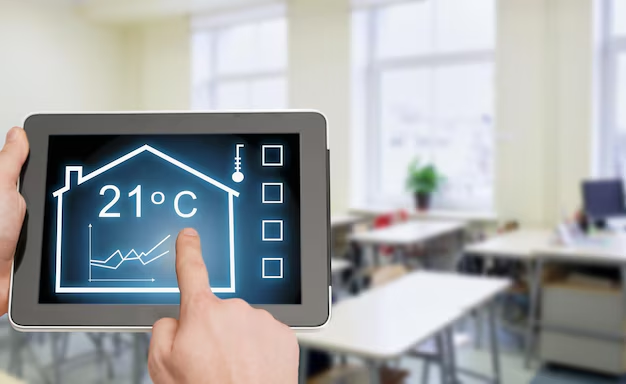Discover How You Can Cut Energy Costs with Smart Home Tech
In the age of smart devices and seamless digital integration, the road to greater energy efficiency starts right in your living room. Smart home technologies are revolutionizing how we conserve energy, providing us with the tools to reduce our carbon footprint, save on utility bills, and create a more sustainable living environment. Whether you're an eco-enthusiast or just seeking to trim monthly expenses, these innovations offer practical solutions tailored for modern homes.
The Key Features of Smart Home Technology for Energy Savings
Smart Thermostats: One of the most popular and effective tools, smart thermostats like Nest or Ecobee adapt to your schedule. They learn when you’re home or away, adjusting the temperature accordingly, which can cut heating and cooling costs by up to 10-12%. Many of these devices can be controlled remotely through your smartphone, allowing you to optimize your home’s climate from anywhere.
LED Lighting with Smart Controls: Gone are the days of high electricity bills due to outdated lighting. LED bulbs are more energy-efficient and long-lasting. When integrated with smart lighting systems such as Philips Hue, they can be programmed to turn off or dim when rooms are unoccupied, further saving energy.
Smart Power Strips: Often overlooked, smart power strips manage the infamous “phantom load” or the energy consumed by electronics when they’re off but still plugged in. These devices detect when a device is in standby mode and cut power automatically.
Energy-Monitoring Systems: Real-time insights into your home’s energy consumption are crucial. Devices like Sense or the Energy Detective allow homeowners to monitor usage patterns, identify waste, and make informed decisions about reducing consumption.
Transitioning to Smart Solutions with Financial Assistance
Harnessing the power of smart technology doesn't have to break the bank. Several government initiatives and financial assistance programs can ease the transition:
Government Tax Incentives: The Federal Energy Management Program offers various tax credits and rebates for homeowners who invest in energy-efficient appliances and systems. Check with local utility companies as they often provide additional incentives.
Energy-Efficient Mortgages: These special loans allow you to make energy efficiency improvements without increasing your down payment. They can be added to the mortgage of an already existing home, making it easier to finance upgrades.
Utility Rebates: Many utility companies provide substantial rebates for customers who invest in smart energy tech. Contact your provider to see what's available in your area.
Embracing smart home technologies is not only an investment in your property but also a positive step towards reducing environmental impact. As you explore these innovations, remember the myriad of financial resources available—from tax breaks to mortgage options—that can make this transition smoother. By making energy efficiency a priority, you're not only saving money but also playing a part in a global movement towards sustainability.
🚀 Financial Assistance Resources
- 🌱 Federal Tax Credits & Rebates: Check for any current federal programs that offer rebates on energy-efficient appliances and new improvements.
- 💡 State and Local Utility Rebates: Many local utility companies offer cash-back incentives for those who upgrade to energy-efficient systems.
- 🏡 Energy-Efficient Mortgages: Investigate options with your mortgage lender to incorporate energy-efficient upgrades into your home loan.
- 🔋 Low-Income Weatherization Assistance Program: If you meet the eligibility requirements, this program offers assistance to improve home energy efficiency at no cost.
- 📚 Educational Workshops: Attend community workshops or online webinars that offer advice and tips on maximizing energy efficiency in smart homes.
